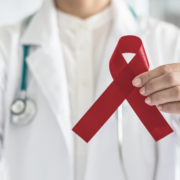Can Multiple Myeloma Be Cured?
Cancer, the abnormal growth of cells that multiply aggressively, has become one of the most prevalent diseases in today’s time. Diagnosis marks one of the most challenging periods in a person’s life. Although curable at early stages, the malignancy itself and the side-effects of treatment change the sufferer’s life at a significant scale.
Lymphocytes represent a major component of the body’s immune system. There are two types of lymphocytes, T lymphocytes and B lymphocytes, and both are crucial for fighting pathogens. When the B lymphocytes respond to a foreign body, they mature into plasma cells and memory cells. The plasma cell is responsible for making immunoglobulins, also known as antibodies, specific to that particular pathogen. These antibodies are the most important precursors in the defense mechanism of the body.
Multiple Myeloma is a type of cancer that seeds itself in these plasma cells that comprise the body’s major immune component. Plasma cells are the prime fighters against foreign organisms such as bacteria, virus, and fungi. Their tendency to engulf the opponent malfunctions and thus the immunity gets badly affected in Multiple Myeloma.
Causes and risk factors for Multiple Myeloma
Although the cause of multiple myeloma is not known, certain risk factors can contribute to it.
1. Toxic chemicals
Toxic, cancer-causing chemicals include benzene-infused products, products that contain sulfates and parabens, fire retardants, dioxins, polychlorinated biphenyls (PCBs) and polybrominated diphenyl ethers (PBDEs). These all are said to be the highest cancer-causing agents. Out of all the chemicals, the ones containing chlorine are the ones that rank first in the production of cancer. Research has demonstrated the relationship between Multiple Myeloma and occupational exposure to six chlorinated solvents: 1,1,1-trichloroethane (TCA), trichloroethylene (TCE), methylene chloride (DCM), perchloroethylene (PCE), carbon tetrachloride, and chloroform, respectively. The occupational solvents here refer to those used in industries and factories.
The study concluded that among all six chlorinated agents, TCA showed the most elevated levels in leading to Multiple Myeloma.
2. Exposure to radiation
Workers at hospitals or diagnostic institutes are at higher risk of Multiple Myeloma. The radiation emitted is so powerful that it can surpass the skin, tissues, and muscles and can penetrate the bones to enter the bone marrow. A cohort study done in Mayak concluded that radiation emission greater than 1 Gy has significantly produced a higher risk of Lymphoma, Leukemia and Multiple Myeloma.
3. Viruses and immune disorders
Certain viruses have a correlation with Multiple Myeloma however, their association is still unknown. The viruses include:
- Simian Virus 40: This is one of the most intense polyomaviruses. It induces primary brain and bone cancers. It’s oncogenic (cancer-causing) property makes it the major culprit in causing multiple myeloma.
- Several herpes viruses: A study was conducted to evaluate the role of human herpesvirus 8 in the pathogenesis of multiple myeloma. Patients with Multiple Myeloma were selected, and their samples of blood were drawn and sent to the lab for testing. The study concluded that the majority of the patients with Multiple Myeloma showed the evidence of human herpesvirus 8 in their blood samples.
Apart from the above viruses, first degree relatives of patients with Multiple Myeloma may develop MGUS (monoclonal gammopathy of undetermined significance). Hepatic viruses and HIV have also proven to be linked to Multiple Myeloma.
4. Hereditary
As with many other diseases, Multiple Myeloma tends to run in families who have already been affected by it. In some cases, Multiple Myeloma goes undiagnosed in a principle patient who transfers it to several offspring before discovering it.
5. Age
Patients aged 40 to 60 are at a higher risk to develop Multiple Myeloma.
6. Gender
Multiple Myeloma inflicts men more often than women. The cause is still unknown, but it could be due to hormonal differences. The male to female ratio is approximately 1.54 to 1.
7. Obesity
The role of obesity in contributing to Multiple Myeloma is unclear, but it might be due to insulin resistance and improper functioning of the hormones.
8. Race
African-Americans are twice as likely to have Multiple Myeloma than other races.
Signs and Symptoms of Multiple Myeloma
Based on Multiple Myeloma cases observed so far, following are the signs and symptoms of Multiple Myeloma:
- Anemia,
- Bleeding,
- Nerve damage,
- Skin lesions (rash),
- Enlarged tongue (macroglossia),
- Bone tenderness or pain (including back pain, weakness, fatigue, or tiredness),
- Infections,
- Pathologic bone fractures,
- Back pain,
- Spinal cord compression,
- Kidney failure and/or other end-organ damage,
- Loss of appetite and weight loss,
- Constipation,
- Hypercalcemia (high levels of calcium in the blood), and
- Leg swelling.
Is Multiple Myeloma Hereditary?
Multiple Myeloma is not considered a hereditary disease. While in some cases Multiple Myeloma may occur due to genetic abnormality, there is no evidence that heredity plays any role in its development. Research has shown several factors may contribute towards the development of Multiple Myeloma. While researchers have indicated a very slight chance that disease could be transferred from parents to their offspring, it’s very uncommon for more than one member of a family to have multiple myeloma.
Stages of Multiple Myeloma
Progressive stages of Multiple Myeloma have been recognized as follows:
- Smoldering: Multiple myeloma with no symptoms.
- Stage I: Starts with anemia, relatively small amount of M protein, no bone damage.
- Stage II: Severe anemia and M protein as well as bone damage.
- Stage III: Huge concentration of M protein, anemia, kidney damage.
Treatment of Multiple Myeloma
Treatment of Multiple Myeloma varies from patient to patient as cases become more and more complex. But some commonly treatment practices are explained briefly below:
- Radiation therapy: Treats a small mass of affected cells. Radiation therapy normally targets the damaged part of bone (where cancerous cells have affected bone causing severe damage). Radiation therapy includes use of high energy rays to kill and stop growth of damaged cells stopping cancer growth. ERBT (external beam radiation therapy) is the most common type of therapy done.
- Surgery: Involves removing or repairing of a body part. It can also fix the bones that have been damaged due to Multiple Myeloma.
- Chemotherapy: Involves the use of drugs to kill the cancer cells. It kills the fast growing cells and in some cases it also damages bone marrow.
- Stem Cell Transplant: Stem cell transplant replaces damaged cells in bone marrow with healthy plasma cells.
- Order of Treatments: Different patients have been given different type of treatments based on type of areas affected. But the order of treatment remains the same. The initial treatment given is known as Primary Treatment, which includes the curing the cancer after the diagnosis. This treatment is also known as an Induction Treatment. the Second step is of Maintenance Treatment, which is done to keep cancer cells suppressed.
Survival chances of Multiple Myeloma patients
Statistics can be confusing because each Multiple Myeloma case varies from patient to patient.
Survival rates are measured from the first point of treatment, such as chemotherapy. In the past, patients often could not survive even beyond the first stage of treatment because when cancer cells grow fast they cause too much damage. Since 2000 the percent of patients living five years after diagnosis has been increasing considerably, for up to 50 percent of patients.
Can Multiple Myeloma Be Cured?
For decades, multiple myeloma was considered incurable and only disease control was the goal of treatment. This was due to the fact that there were very few treatment options available.
With the introduction of high-dose therapy, stem-cell transplants, and immunomodulatory drugs, the survival rate for myeloma patients doubled when compared to the 1990s when only chemotherapy was used.
When deciding if multiple myeloma can be cured we have to define some terms:
- Partial remission – some, but not all signs and symptoms of myeloma have disappeared
- Remission – a decrease in or disappearance of signs and symptoms of myeloma
- Complete remission – all signs and symptoms of myeloma have disappeared
In an article for Myeloma Crowd, Jennifer Ahlstrom says, “Does remission mean a cure? In myeloma it typically does not. Though we love the word remission, we hesitate because myeloma is known to come back after some time.”
As a myeloma patient, you may always worry about the chance of recurrence, but there is hope that you can live with long treatment-free periods with excellent quality of life.
Sources:










